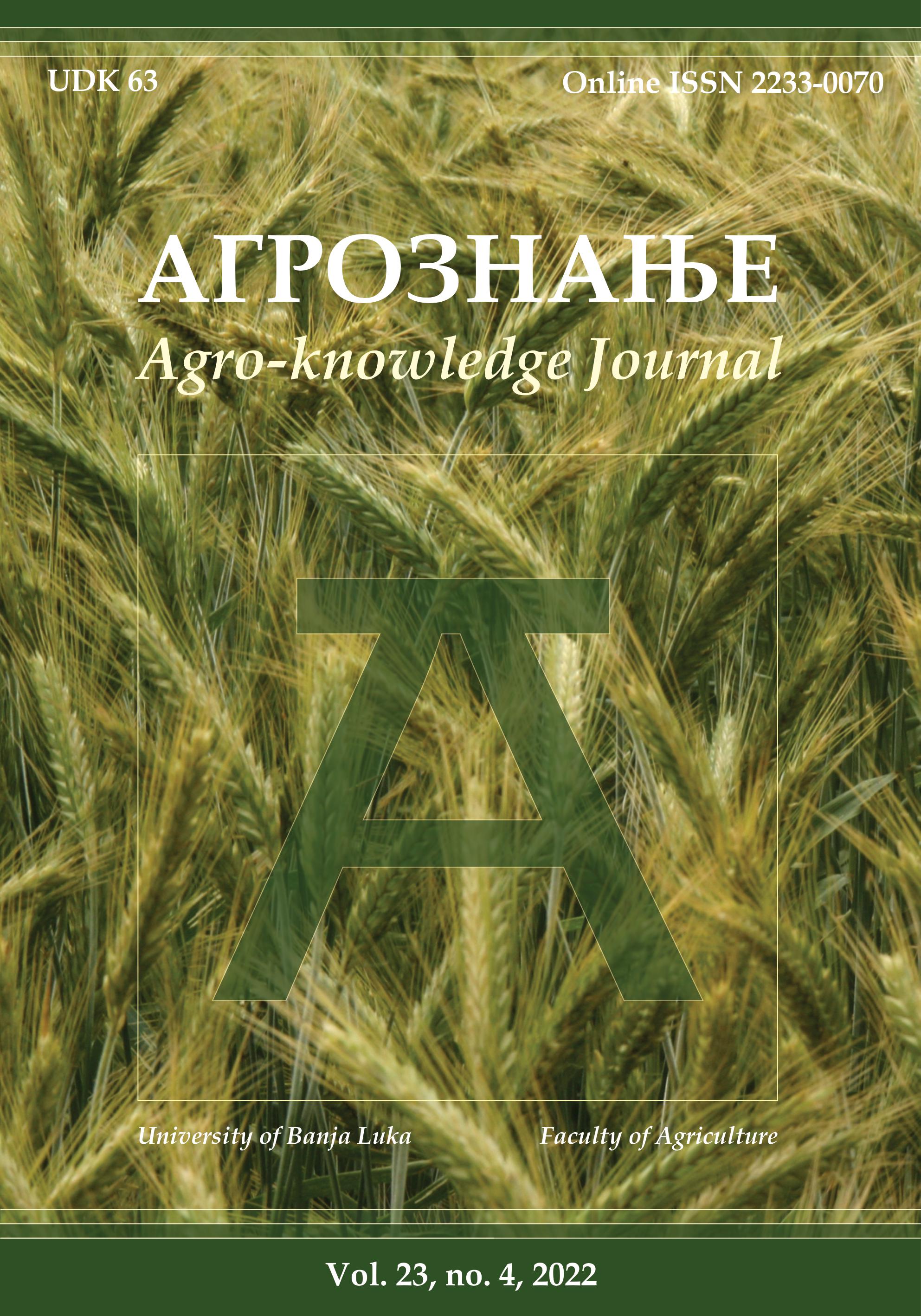Yield and calo of the “Marija Zvijezda” Trappist cheese during ripening
Рандман и кало сира Траписта “Марија Звијезда” током зрења
DOI:
https://doi.org/10.7251/AGREN2204229BAbstract
This paper presents the results of research on yield and calo during ripening of the Trappist cheese. The cheese has been produced for more than 140 years by the monks of the Marija Zvijezda Monastery (Mariastern Abbey) in Banja Luka. In 2008 cheese production has been restored and the cheese has been presented to the market in cooperation with the “Livač” Cooperative. The Trappist cheese is made in the form of a wheel weighing 1.6-2.0 kg and it has a natural rind that is yellowish, thin, and smooth. The conditions and the way in which it ripens are specific and give a special flavour to the cheese. The duration of the ripening is a minimum of 90 days and it happens under specific conditions of humidity and temperature. The cheese ripens on wooden boards and it is rotated and cleaned manually. Its consistency is soft, elastic, mild, and it is easily cut. The cut is smooth without or with very little holes. It is characterized by a clean scent of milk, slightly salty, and it melts easily. The cheese yield calculated for the Trappist cheese is 12.81 %. The actual cheese yield obtained after 90 days of cheese ripening is 10.74 %. Cheese weight changes with ripening time and weight loss at the end of the production cycle is 0.322 kg or 15.85 %. The amount of whole milk needed for one kilogram of the final cheese product is about 9.35 kg.
Key words: Trappist cheese, yield, calo, Marija Zvijezda monastery.

